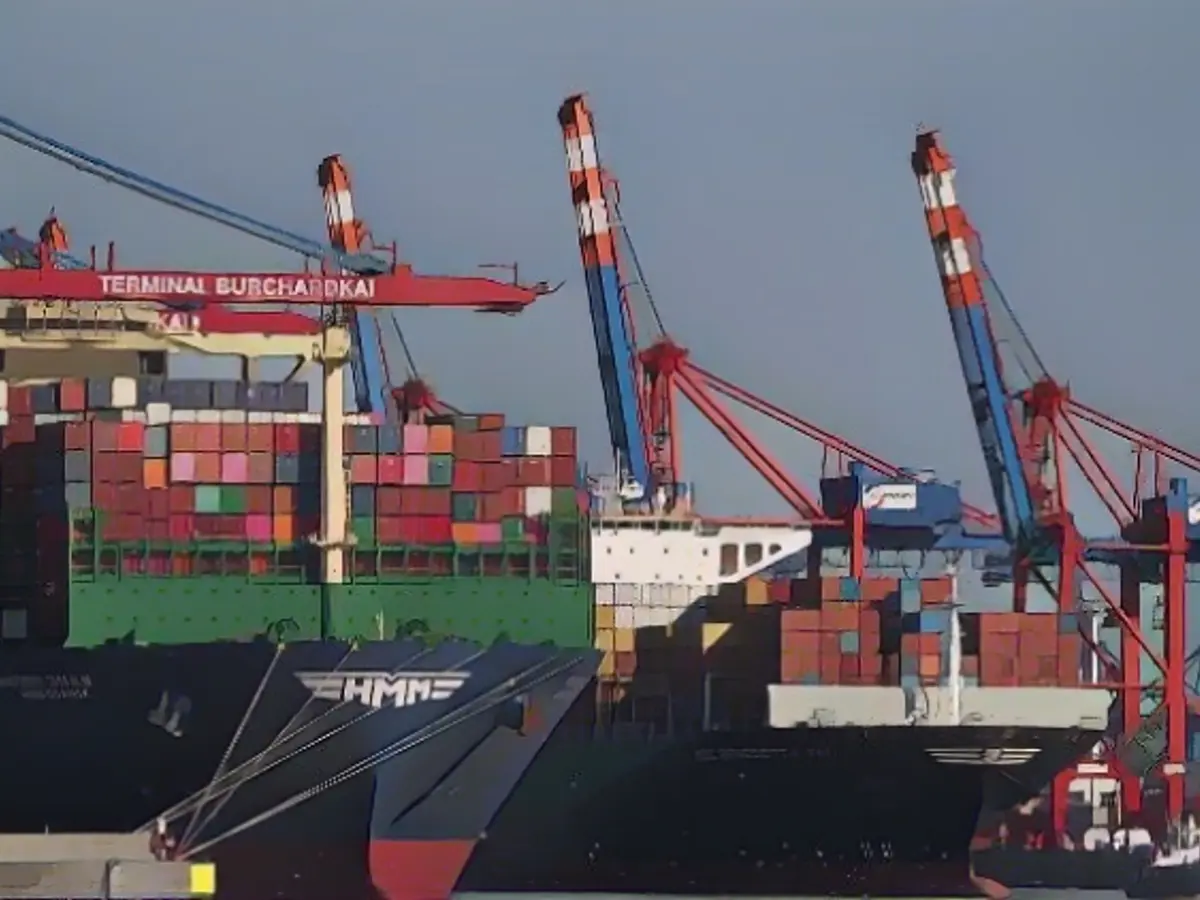German exports take a surprising dip in October, again! 📉
Here's the lowdown: Germany's exports spent another month in the red in October, slipping by 0.2% compared to September, reaching a total of 126.4 billion euros. Economists, who had hoped for a 1.1% increase, were left scratching their heads. On the flip side, imports took a tumble too, dipping by 1.2% to 108.6 billion euros.
Why the decline? Mainly because of Europe's struggling businesses. Goods worth 67.9 billion euros were shipped to EU member states, marking a 2.7% decrease. However, there's a silver lining in the form of USA, our faithful buyer. Exports to the United States grew by 5.7% to reach 13.5 billion euros, while China and the UK also contributed to the exports, increasing by 1.5% and 5.6% respectively.
But fear not! The mood in Germany's export industry took a positive turn in November. The Ifo-Industry's barometer for export expectations saw a rise, reaching a minus 3.8 point from a minus 6.3 point in October. This is the highest value since six months ago, suggesting a potential stabilization. However, Klaus Wohlrabe, head of the Ifo surveys, was quick to remind us that while the export economy might have a sense of momentum, it's yet to gain any speed.
What's hindering Germany's export industry? The global economy's sluggish state alas is the primary culprit. Central banks have aggressively raised their key interest rates to combat inflation, making investments in export-related goods like machinery, equipment, and vehicles more expensive. This shift has dampened demand.
Even though Germany experienced an unexpected decrease in exports last October, EU businesses continued to be significant buyers, importing goods worth 67.9 billion euros from Germany. And the good news? The steady increase in exports to the USA, by 5.7%, offers a glimmer of hope amidst the overall decline.
(Enrichment Data - Several factors contribute to the decline in Germany's exports, including a significant terms-of-trade shock, the global energy crisis, economic shocks post-pandemic, and weak external demand. Additionally, dependency on Chinese imports, persistent competitiveness issues, and weak productivity growth affect the export-dependent industry in Germany.)




